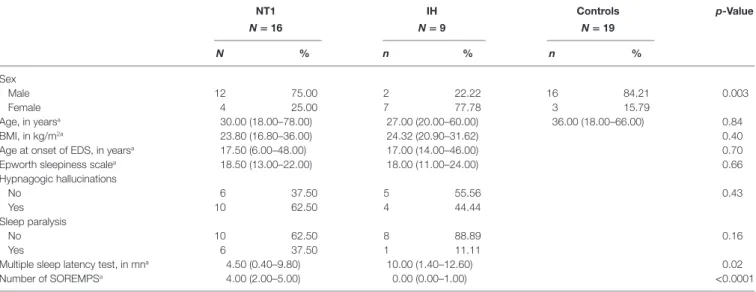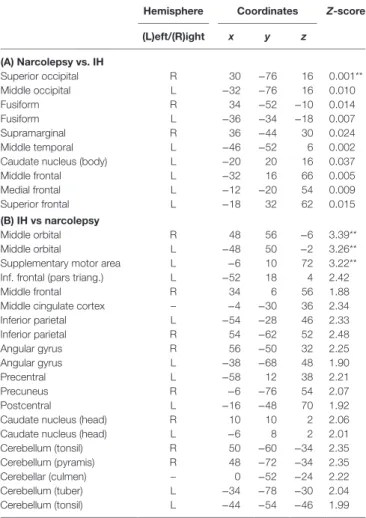[18F]Fludeoxyglucose-Positron Emission Tomography Evidence for Cerebral Hypermetabolism in the Awake State in Narcolepsy and Idiopathic Hypersomnia
Texte intégral
Figure


Documents relatifs
I), lingual phase I (LPh I), and phase II (Ph II) facets for the Indonesian fossil hominid maxillary (a) and mandibular (b) molars (Supplementary 655. Table 1) compared with fossil
Vivre dans un village, passe souvent pour une contrainte, car les tabous ancrés, que cultive le culte des ancêtres, dominent toujours et âprement.. Les gens ont
Sans parler de ceux que l’on souhaiterait n'avoir jamais dit, tous ces mots qui nous ont trahis ou punis.. Ceux-ci, essayons de ne jamais plus les dire
Images provenates de clker.com; openclipart.org; Mus´ ee Zoologique, Universit´ e de G¨ ottingen et par PavelD [GFDL (http://www.gnu.org/copyleft/fdl.html) or
Progress has also been made experimentally in determining the three-body q's as well as the closely related distorted-wave-Born-approximation (DWBA) parameter D2. In
cold-side temperature can be held constant to about f 0.1 F deg or about 0.33 per- cent of the temperature difference. If all the measurement and control errors were
Previous studies performed in patients with severe to mild disorders of consciousness have examined scalp activity in neural sources to search for neural markers
Après la présente introduction, ce document compte trois parties dont la première traite en deux chapitres du milieu d’étude, du matériel et des méthodes de collecte